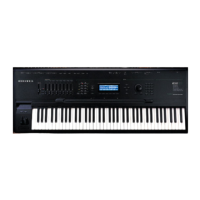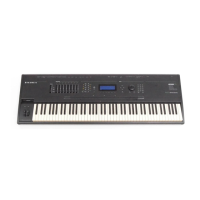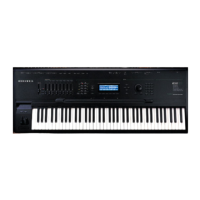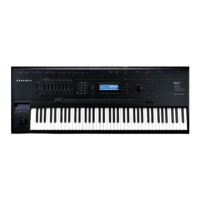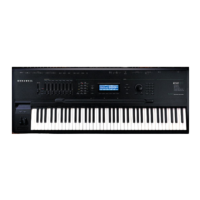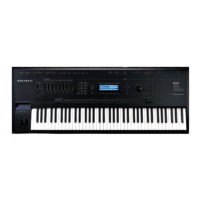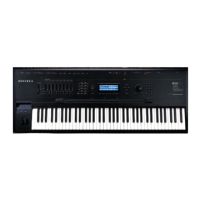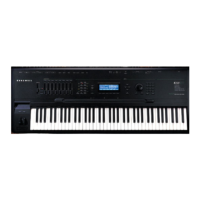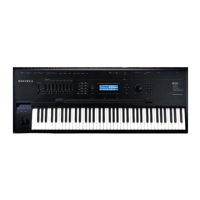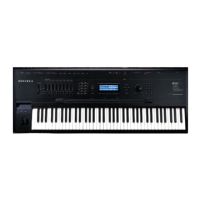Master Mode
Guitar/Wind Controller Mode
11-5
indication of how your voices are being used. For example, if all or most of the voices are being
represented by capital Xs on this screen, then there’s a good chance that when voice stealing takes
place an audible voice will be reallocated.
Use the
Stealer
soft button to select a display that will show how the K2500 is allocating its 48 voice
channels. When you trigger a note, the note number will appear in one of the display’s three
columns, and will remain visible while the note is sustained. The four-digit numeral you see is an
internal value that has no direct significance. As long as fewer than 48 voice channels are being
used, new note numbers will appear as you play additional notes, and the note numbers for notes
that have decayed or have been released will disappear. When all 48 voices have been activated, the
display will show which voice channels are shut off (“stolen”) to enable new notes to play.
Press the
Done
soft button when you are finished with the Utility page. This is the same as pressing
the Exit button.
View
Press the
View
soft button to see the current program in large type. Press it again to return to
the normal view.
Sample
Press the
Sample
soft button to enter the K2500’s sampler. Refer to Chapter 15 for complete
information on the sampler.
Reset
Press the
Reset
soft button if you want to return your K2500’s memory to the state it was in when
you bought it.
Caution!
The K2500 will ask you if you want to delete everything (meaning all RAM objects), and a
pair of
Yes
/
No
soft buttons will appear. Press
No
if you want to keep any objects you may not have
saved. Press
Yes
, and everything stored in RAM will be erased. All parameters will be restored to
default values. After a few seconds, the K2500 will return to the Program mode page.
Guitar/Wind Controller Mode
If you are using a wind controller or guitar controller with your K2500, you may not always get the
sound you expect. Since these controllers will sometimes send a MIDI Note On command before
sending Breath or Volume data, the attack transients that characterize each instrument may be lost.
Therefore, the K2500 provides a special mode that may improve its response to your guitar or wind
controller. To enter Guitar/Wind Controller mode, press both Chan/Bank buttons while in Master
mode, then confirm with the
Yes soft button.
||||||||||||||||||||||||||||||||||||||||
||||||||||||||||||||||||||||||||||||||||
||||||||||||||||||||||||||||||||||||||||
Enable|Guitar/Wind|controller|mode?|||||
||||||||||||||||||||||||||||||||||||||||
||||||||||||||||||||||||||||||||||||||||
||||||||||||||||||||||||||||||||||||||||
||||||||||||||||||||||||||||||Yes|||No||
Guitar/Wind Controller mode slightly delays MIDI Note On and Note Off commands, so that
response to pitch bend and other expressive components of a note will be more accurate. If you are
hearing a "glitch" in the attack of notes from your guitar or wind controller, you should try setting
your K2500 to this mode. Keep in mind, however, that since this mode slightly changes the order in
which MIDI commands are sent, it may affect the performance of the K2500 under some
circumstances.
When you reboot the K2500, it will reset Guitar/Wind Controller Mode to off.
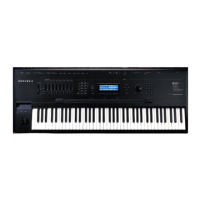
